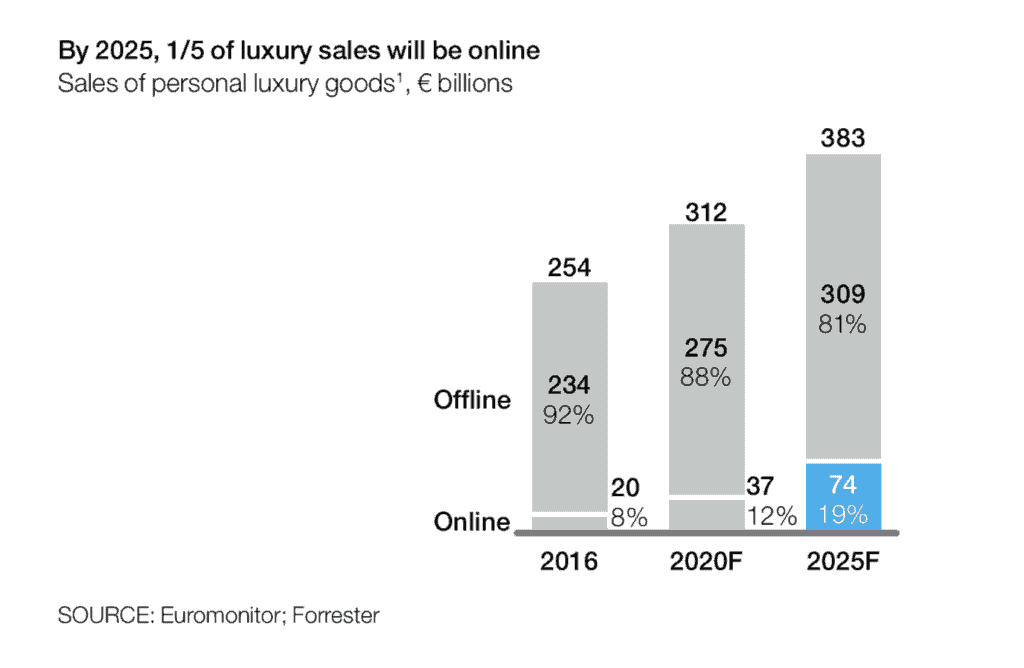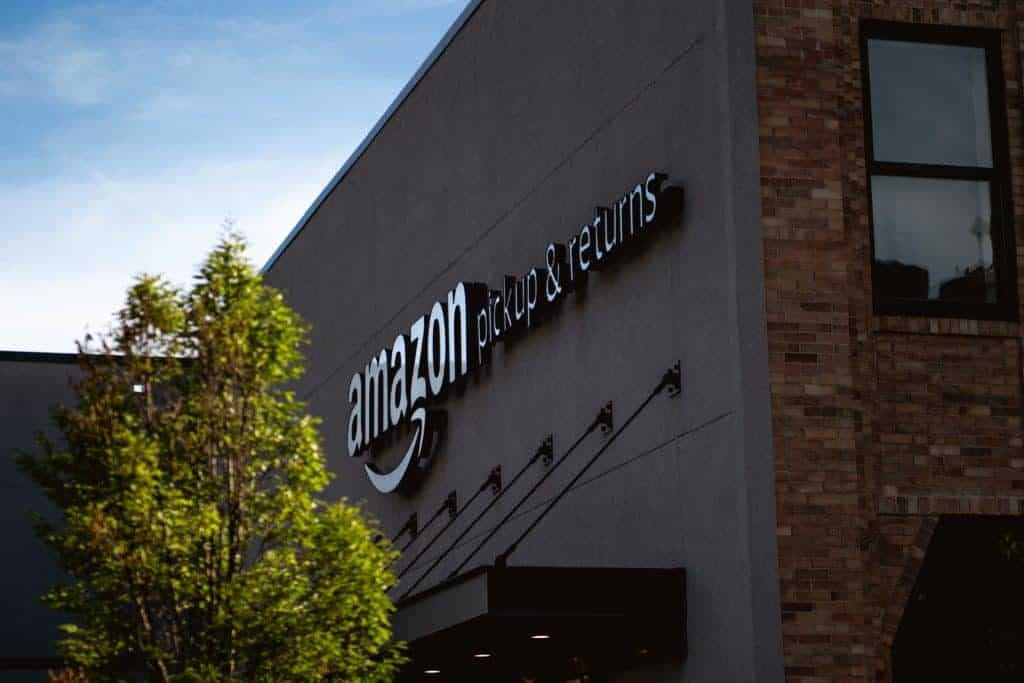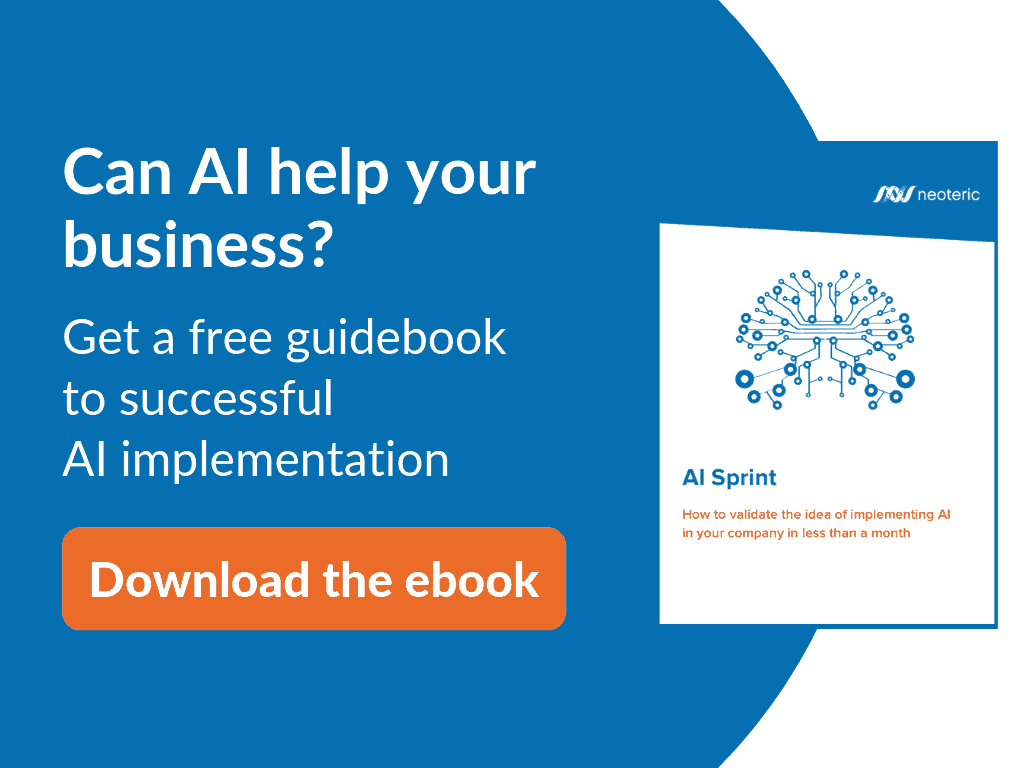As 85% of customer engagement with online shops is predicted to happen without human assistance, the importance of AI for e-commerce businesses increases. By 2020, 85% of CIOs will unfold pilot AI projects in their organizations, according to Garner Study.
An increasingly higher number of online businesses expect AI to have a positive effect on their bottom line and provide a competitive advantage.
In this article, you will five success stories of AI implementation in e-commerce as well as strategic directions which will help define how AI can be introduced in your e-commerce business.
Perspectives for AI in E-Commerce
AI has certainly become a buzzword, but how should you approach AI in your e-commerce business wisely so that it not only creates a competitive edge, but also, as a result, affects your bottom line?
If you want to make your e-commerce business a new success story using AI, you should first start with a strategy during AI sprint and define what are the areas where AI can solve customers’ problems and, as a result, improve your bottom-line.
Among key areas where can AI be effective are improved shopping experience, price optimization, the prevention of counterfeits, better product design, sales forecasting to mention a few. We are describing the use cases in the article 6 ways AI can be used in e-commerce.
Success Stories of AI in E-Commerce
1. Burberry
Luxury brands are hesitant at implementing AI and shifting to online channels. The fear stems from the belief that using AI can result in the popularity loss among rich clientele expecting concierge, tailor-made products and one-to-one service. In the luxury industry, brick-and-mortar shops are most often the place where the purchase is finalized.
Burberry decided to disrupt the industry and become an early adopter of AI in 2006 with a goal to bridge the online and offline customer experience. This happened when e-commerce started to be perceived as a threat to brick-and-mortar shops.
Burberry has proved that AI can bring a competitive advantage to a business and win over more customers. The strategy proved to be successful, as given the fact that by 2025, 20% of luxury sales are predicted to happen online.
The importance of online channels cannot be neglected as 80% of luxury sales are influenced by online, according to McKinsey. The share of tech-savvy buyers (Millennials and Gen Z) will make up 45% of the global luxury market by 2025.

So what has Burberry done to harness online channels and benefit from AI? It utilized RFID tags in its brick-and-mortar stores to gather data about how customers behave within its shops. Compiled with information on customer online activity and previous purchases, the data could be used by sales assistants meeting customers in brick-and-mortar shops.
Having an overview of previous purchases of a client entering a shop, sales assistants could provide them with better recommendations and increase the total value of the purchase.
For example, if the client had bought a red coat, a consultant would offer a bag suiting the coat. Sales assistants got a chance to relate to a client’s previous purchasing history and establish a bond with a client they have never met before.
Apart from this implementation of AI, the brand has also harnessed big data to identify counterfeit products. This was possible by utilizing AI-powered image recognition. The technology from Entrupy helped identify counterfeit products from an image. With the use of technology, texture and weaving are analyzed to spot the counterfeit in 98% of cases. The business benefits are obvious – after a counterfeit is identified and information about it is stored in the system, the brand can take actions against companies producing counterfeits. This can help eliminate illegal enterprises from the market and get revenue back.
Apart from cutting on revenue loss, Burberry was able to increase customer recurring revenue by 50% as of 2015.
2. Starbucks
Would AI substitute baristas? Starbucks has proved this can be a case… to some extent. In 2017 the coffee chain has introduced a virtual assistant that helped customers make an order and pay online using text or voice. The virtual assistant has not excluded the need for a human one who prepares the order.

When a user enters a Starbucks coffee shop, a barista is able to access information through the point-of-sales device on a client’s previous buying history and place the order.
Apart from the text option, Starbucks has unfolded Starbucks Reorder skills for Amazon Alexa. By saying “Alexa, order my Starbucks” clients could submit their repeat order to a chosen coffee shop.
Starbucks has recognized 8 million customers preferring online payments, 1 in 3 users sticking to Mobile Order & Pay and 13 million members of Starbucks’s Reward Program.
Using its reward program, Starbucks also gathers information on customer purchasing history. Based on it, patterns between products clients ordered in the past and their current preferences could be established. Extracting meaningful insights on customer behavior, Starbucks was able to create tailored recommendations for its clients.
3. Stitch Fix
Founded in 2011, Stitch Fix has revolutionized online shopping. Gathering data from clients on their style preferences, Stitch Fix connects it with the expertise of stylists and artificial intelligence. The final result – hand-picked clothing unique for a client’s style.

With the collected data on client preferences, Stitch Fix is able to identify fashion patterns, which helps analyze how a client’s needs change over time, what the patterns that define them are or can even help spot some new trends that haven’t been voiced yet in the media.
Stitch Fix identifies style as a mix of attributes such as color, arm length, and neckline. After evaluating attributes, the algorithm re-combines and mixes them to later send a final design to stylists who create an inventory.
Apart from the design part, Stitch Fix has been using AI to streamline its operations and logistics. After the request for clothing has been sent, the algorithm chooses the most optimal location of a warehouse, the closest to the customer’s location, and decides on an optimal route to ensure all shipments are picked at the same time.
Amazon
Amazon uses an anticipatory shipping model that harnesses data to predict what products have a high purchase probability on the website and predict when a customer will need them. Keeping in mind that Amazon contains a huge directory of products and a customer can easily get lost among multiple product categories, the model helps reduce search time and help finalize the purchase faster.

With accurate projections of the overall product demand, Amazon is able to streamline its logistics sending just a sufficient number of items to warehouses to satisfy the market needs. It means popular products remain in stock and the delivery time is cut down. Predictive analytics helped Amazon increase product sales and profit margins. For a customer, it resulted in reduced delivery time and overall expenses.
Apart from optimizing logistics and predicting customer needs, Amazon is using AI to define the right pricing for each item. Prices are adjusted based on site activity, the product price of competitors, availability, order history, expected profit margin, and more. As data is being analyzed and undergoes updates, prices are reset and adjusted every 10 minutes.
Read also: Dynamic pricing in practice: how does it work, and is it a good idea for your business?
5. Domino’s Pizza
The online channel of distribution for Domino’s Pizza comprises around 55-58% of all orders. Understanding the importance of the online channel, the brand harnesses data to get a 360-degree overview of its customers. For example, with the data collected, Domino’s can derive insights on who is the dominant buyer in the household, what channels they are using and how they are interacting with those channels. This helps make killer offers (just exactly the right pizza today), but also grant unique coupons.

Domino’s captures and analyzes data from multiple channels – text message, social media, Android, Amazon Echo, to mention just a few. After that, data is being input into the Domino’s Information Management Framework.
This data is complemented with open-source third-party data such as the United States Postal Service, geocode information, demographic data, competitor data. This, in turn, helps segment customers into buckets and then tailor a unique offer for each one.
Apart from using AI to get a better understanding of customer needs, Domino’s Pizza is using algorithms to offer clients consistency of pizza quality. Too little cheese, or too thick pizza crust? With AI, this is no longer a concern.
A pilot project was unfolded in Australia and New Zealand with a smart scanner checking pizzas when baked. Based on data previously fed into the system, recommendations on the “perfect” pizza are provided. The scanner grades each pizza going out from the kitchen oven based on pie size, pizza type, amount of toppings, to name a few of the criteria. This process is possible by feeding a picture of a ready-baked pizza into the system and comparing it to a large number of pizzas baked in the past to later generate an assessment before the pizza is sent to a client.
Summary
To summarise, AI can be used to create a better shopping experience, optimize price in real-time, allow for better product design, forecast sales and inventory more precisely, and even cut down on counterfeit products. These areas are just several applications where AI can be harnessed to improve a bottom line and win over customers. Case studies of Burberry, Stitch Fix, Starbucks, Amazon, and Domino’s Pizza have proved that. How about your business case?
AI implementation should not be approached without a strategy. If you want to implement AI in your e-commerce business, download a free AI Sprint white paper and design your unique AI strategy for your product.


